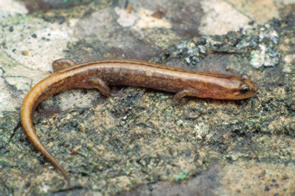
Desmognathus aeneus
Photo by D Dennis
Description: The seepage salamander is an especially small, slender salamander with a yellow to reddish-brown dorsal stripe. This species often has a light circular mark on the top of each thigh and a Y-shaped mark on the top of the head. As in most Desmognathus, a light line is present from the eye to the back of the jaw.
Habitat/Range: This species is named after the wet seepage areas in which it is commonly found. Seepage salamanders may also be present in moist areas under rocks, logs, and leaf litter in the vicinity of small streams. The seepage salamander has a patchy distribution in deciduous forests of southwestern North Carolina. Where present, this species is often locally abundant.
Reproduction: Seepage salamanders typically lay 11-14 eggs in moss or under cover objects near streams and seepages. The female will remain with the eggs until hatching. Seepage salamanders lack an aquatic larval stage. Although seepage salamanders may hatch with tiny gills, these disappear within a few days.
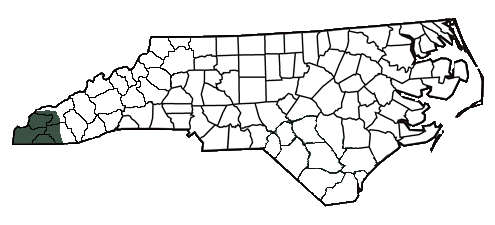
The shaded region represents the range of the seepage salamander in North Carolina.
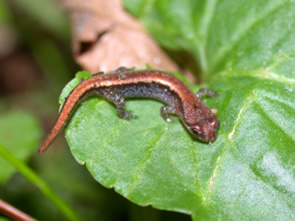
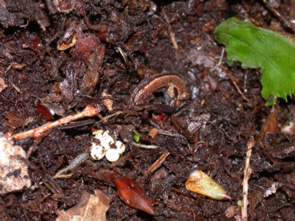
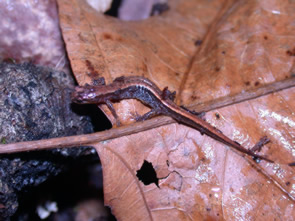
This female, partially buried in the substrate, is with her egg clutch.
Photo
by JD Willson
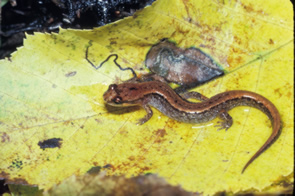
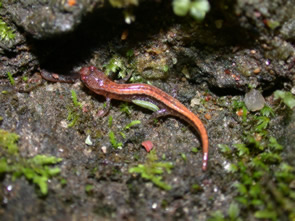
Photo by D Dennis
Photo by JD Willson
